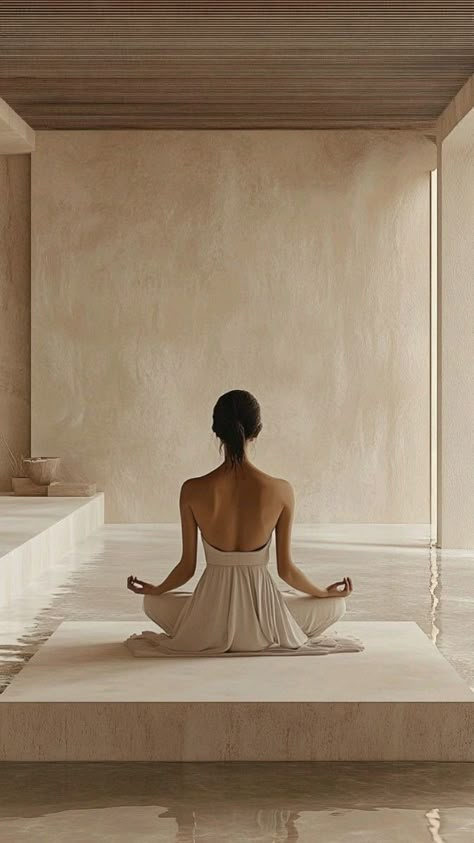
Anastasia Hisel
Emerging Wellness Trends Impacting the Workplace in 2025
As 2025 unfolds, the landscape of workplace wellness is undergoing a tangible, deeply personal transformation. Long gone are the days when standing desks and annual health fairs passed as comprehensive wellness initiatives. These were the overtures—the initial notes of a much grander composition that now explores the rhythms of human performance, inner alignment, and the science of longevity. This year, the frontier of corporate wellbeing is being redefined not only by technological advancements but by a collective yearning for experiences that renew, elevate, and anchor us in authenticity.
The modern professional, particularly those between 25 and 45, no longer measures success solely in quarterly gains or architectural corner offices. Instead, there's a growing preference for rhythm over routine, depth over distraction. Whether it's through cold exposure experiences curated in alpine settings or breathwork retreats attended en masse by ambitious entrepreneurs, the pursuit of wellbeing has taken a decidedly considered turn. It’s less about intermittent escapes and more about the intentional integration of health into the context of daily life—especially at work, where the blend of purpose, pace, and pressure has created new imperatives.
Increasingly, organizations are recognizing that the health of their workforce is not ancillary; it is foundational. What emerges this year is a convergence of science and soul, with trends that command not just attention but participation. These are not trends ignited by influencers or marketing campaigns—they are conversations happening in high-level boardrooms, in private wellness labs, and during long walks taken by those who refuse to sacrifice their vitality for productivity. Below, we explore how some of these wellness philosophies are being lived, not just implemented.
The Architecture of Stillness: Braincare and Cognitive Recovery
A noticeable shift is taking place within the daily rhythms of executive life—a revaluation of what it means to rest the mind, not simply rest the body. Cognitive recovery, sometimes called “braincare,” is quickly becoming a cornerstone of high-level workplace wellbeing strategies. But this isn't about occasional meditation apps or five-minute headspace sessions. We're now seeing corporate environments designed with neuroaesthetics in mind—spaces influenced by neuroscience to strategically induce mental clarity and focus. Minimalist, warm-toned design palettes curate an atmosphere of serenity amidst digital saturation, while scent diffusers dispense lab-tested blends to enhance alpha-wave brain activity, supporting creativity and complex problem-solving.
It’s not only about aesthetics, though. Luxury wellness clinics are collaborating with neurology experts to bring sophisticated, data-backed cognitive recovery programs to busy professionals. At a discreet West Coast facility known for working with venture capitalists and tech founders, clients undergo EEG monitoring while engaging in guided cognitive fasting—a systematic reduction in information input designed to lower neural fatigue. Instead of caffeinating their way through deadlines, individuals are now learning to harness the benefits of neuroplasticity through micro-dosing nature, engaging in binaural sound therapy, and integrating specific nootropic regimens personalized through genetic and epigenetic profiling.
The idea is not escapism but architectural stillness—the kind that constructs sustainable performance. For high-performers, the reframing of cognitive micro-recoveries as essential, rather than indulgent, is not only reshaping schedules but redefining leadership. One quietly influential CEO recently began his Monday meetings not with slides, but with a ten-minute shared breathwork protocol—an internal recalibration that set the week's emotional tone. This isn’t performative wellness; it's personal infrastructure.
The Bio-Individual Path: Precision Wellness and the Personalized Experience
In a world awash with wearable tech and biometrics, precision wellness is finally coming of age with a maturity that respects both data and desire. Individuals no longer accept one-size-fits-all approaches to performance and health. Instead, the wellness experience is becoming increasingly customized—rooted in individual markers ranging from microbiome composition to chronotype tendencies. And the workplace, always a reflection of broader cultural currents, is evolving to meet this hyper-personalization.
Consider the rise of circadian-aligned work policies. Some elite law firms and pioneering fintech companies are now allowing employees to structure key productivity blocks around their biological peak hours, as identified by metabolomic testing and real-time glucose monitoring. Presentations aren’t dictated by static time slots but curated based on when the presenter’s cognitive fluidity is at its best. These organizations understand that a task done in alignment with one's natural energetic rhythm is not only more effective but less draining on the system. Burnout, after all, is often the misalignment between internal rhythm and external demand.
In parallel, corporate wellness benefits are no longer limited to spa credits or gym reimbursements. Increasingly, they include access to longevity-focused concierge services that orchestrate everything from bioresonance scans to tailored adaptogenic compounding. Employees at high-growth firms are now being offered quarterly wellness sabbaticals, during which they undergo holistic audits—an intricate blend of bloodwork, breath analysis, and lifestyle evaluation—that produce a unique vitality roadmap for the quarter ahead. These subtle, deeply individualized changes in how one works, rests, eats, and moves are less about fragility and more about crafting resilience with surgical precision.
An Evolution Not a Trend
The language of wellness may evolve, but its essence remains unchanged: to live well, intentionally, and with clarity. The workplace, often the crucible where modern life is tested and refined, is becoming a fertile space for such evolution. These 2025 trends aren’t surface-level novelties; they are reflections of a deeper cultural shift toward self-awareness, scientific literacy, and experiential quality.
Ultimately, these movements are not about striving for perfection but about striking resonance. Whether through braincare sanctuaries, circadian-based scheduling, or genetically informed wellness programs, today's professionals are quietly crafting systems that support not only their ambition but their longevity. And that shift—from surviving the week to designing a life that supports the mind, body, and spirit—is what’s truly emerging in the workplaces of this new era.


